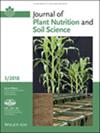Coupling scales in process-based soil organic carbon modeling including dynamic aggregation
Abstract
Background
Carbon storage and turnover in soils depend on the interplay of soil architecture, microbial activities, and soil organic matter (SOM) dynamics. For a fundamental understanding of the mechanisms that drive these processes, not only the exploitation of advanced experimental techniques down to the nanoscale is necessary but also spatially explicit and dynamic image-based modeling at the pore scale.
Aim
We present a modeling approach that is capable of transferring microscale information into macroscale simulations at the profile scale. This enables the prediction of future developments of carbon fluxes and the impact of changes in the environmental conditions linking scales.
Method
We consider a mathematical model for CO2 transport across soil profiles (macroscale), which is informed by a pore-scale (microscale) model for C turnover. It allows for the dynamic, self-organized re-arrangement of solid building units, aggregates and particulate organic matter (POM) based on surface interactions, realized by a cellular automaton method, and explicitly takes spatial effects on POM turnover such as occlusion into account. We further include the macroscopic environmental conditions water saturation, POM content, and oxygen concentration.
Results
The coupled simulations of macroscopic transport and pore-scale carbon and aggregate turnover reveal the complex, nonlinear interplay of the underlying processes. Limitations by diffusive transport, oxygen availability, texture-dependent occlusion and turnover of OM drive CO2 production and carbon storage.
Conclusions
This emphasizes the need for such micro–macro models exchanging information on different scales to investigate and quantify the effects of structural changes, variations in environmental conditions, or degradation processes on carbon turnover.


 求助内容:
求助内容: 应助结果提醒方式:
应助结果提醒方式:


